4. Points to Consider for Evacuation

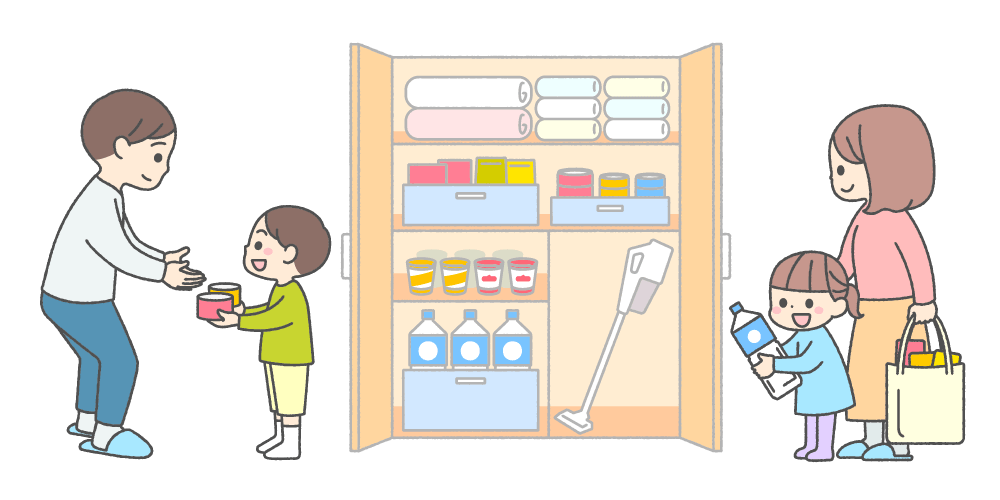
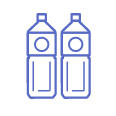 Staying Prepared Day-to-Day
Staying Prepared Day-to-Day
Stockpiling at home for everyday use
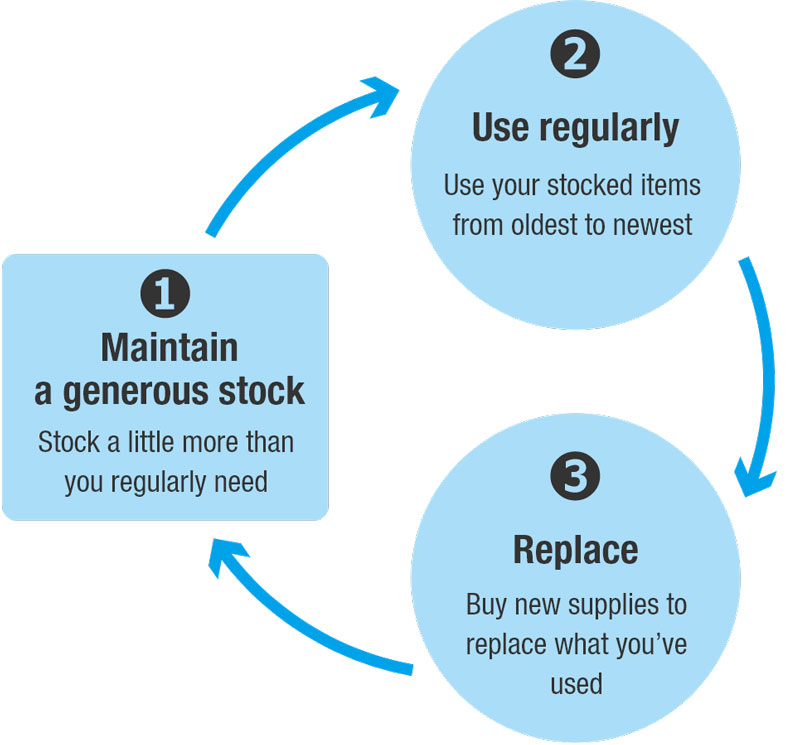
This is an easy way to prepare for a disaster situation that can be implemented by simply buying a little extra water, shelf-stable food and hygiene products, and using them in order of oldest to newest. By using what you have stocked on a daily basis and replenishing it as needed, you can always be prepared for disasters.

Save bath water on a regular basis
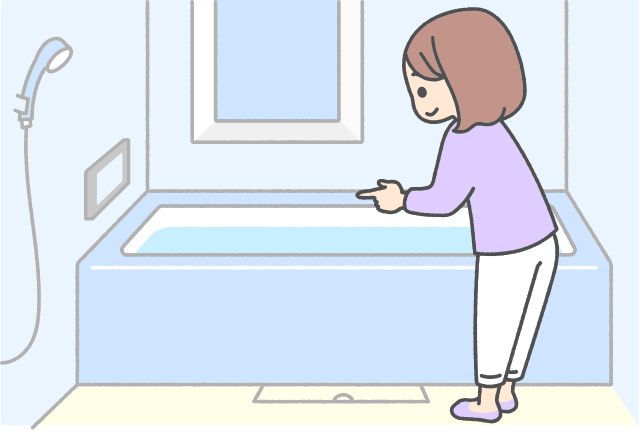
When the water supply is cut off, leftover bath water can be used for toilets and laundry as well as for extinguishing fires. After taking a bath, it is better to not drain the water immediately, but to save it in case it is needed.
*If you have young children or pets, guard against accidents by covering the bath or closing the door.
 Caution About Toilets
Caution About Toilets
Check for abnormalities before flushing
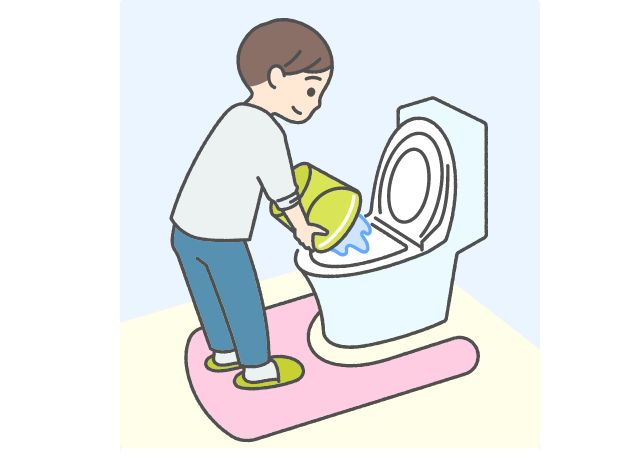
If there is a problem with the drainpipes due to an earthquake or flood, the toilet could overflow. In such a case, do not flush the toilet, and keep emergency toilet kits stocked.
Even when the water supply is cut off, once it is confirmed that there is nothing wrong with the drainpipe, the toilet can be flushed by quickly pouring a bucket of water into the toilet bowl. The waste will be discharged along with the water.
Keeping the Easily-Contaminated Toilet Clean
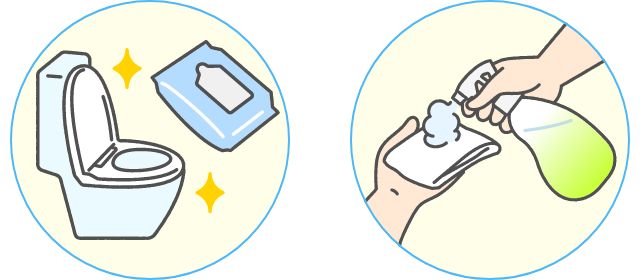
When the water supply is cut off and you have to use a bucket of water to flush the toilet, it tends to splatter and become more unsanitary than usual.
Use disposable toilet paper to wipe off grime. You can also use a toilet cleaner wipe for better results.
There are two types toilet cleaner wipes: the sheet type and the spray type.
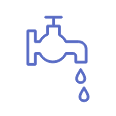 What to do at home when water is scarce
What to do at home when water is scarce
How to wash undergarments with a small amount of water
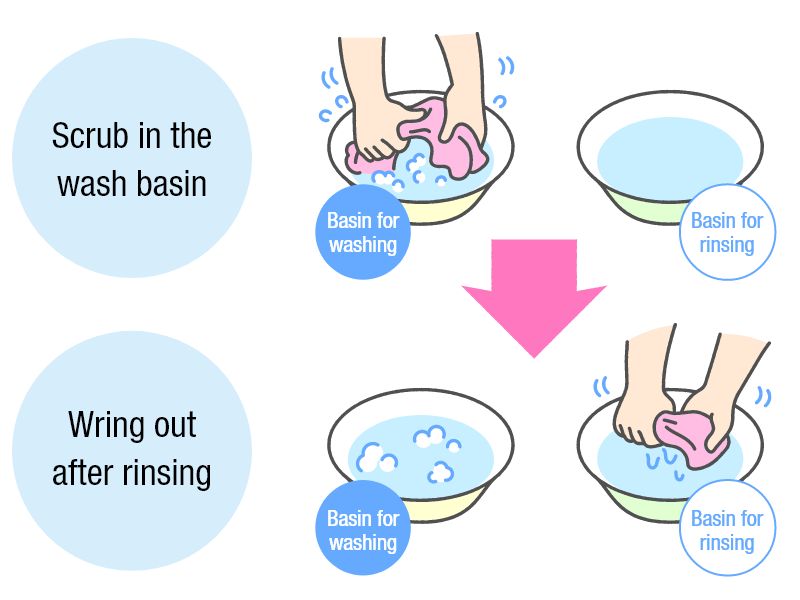
Prepare two basins, one for washing and one for rinsing, and fill the first with enough water to soak the undergarments. Dissolve the detergent in the washing basin and, starting with the least soiled item, wash and wring it out. Then rinse in clean water in the second basin, wring it out, and hang it to dry. As the rinse water becomes soapy, reuse it for washing.
Cleanse your body without using water
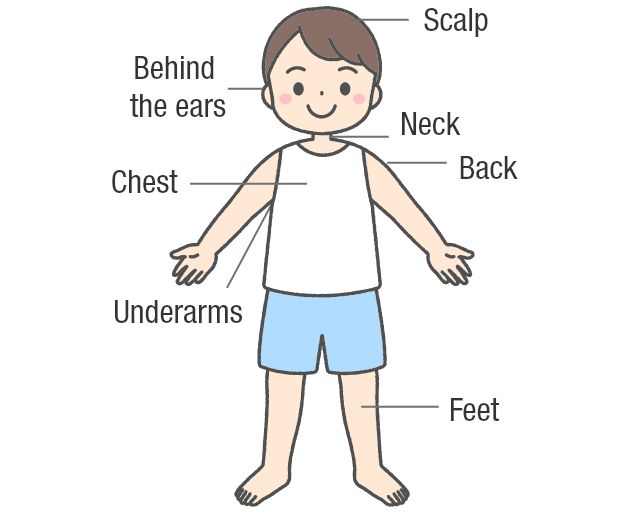
If you can't take a shower, wipe yourself down with a damp cloth or towel. Thoroughly wipe your underarms, scalp, behind your ears, and feet.
